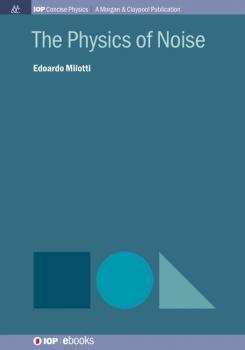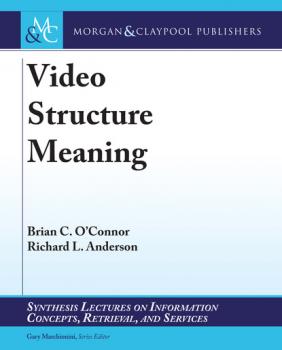MREADZ.COM - много разных книг на любой вкус
Скачивание или чтение онлайн электронных книг.Relativistic Quantum Field Theory, Volume 1
Volume 1 of this three-part series introduces the fundamental concepts of quantum field theory using the formalism of canonical quantization. This volume is intended for use as a text for an introductory quantum field theory course that can include both particle and condensed matter physics students. Dr. Strickland starts with a brief review of classical field theory and uses this as a jumping off point for the quantization of classical field, thereby promoting them to proper quantum fields. He then presents the formalism for real and complex scalar field theories, fermion field quantization, gauge field quantization, toy models of the nuclear interaction, and finally the full Lagrangian for QED and its renormalization. Part of IOP Series in Nuclear Medicine.
The Physics of Noise
For a physicist, «noise» is not just about sounds, but refers to any random physical process that blurs measurements, and in so doing stands in the way of scientific knowledge. This book deals with the most common types of noise, their properties, and some of their unexpected virtues. The text explains the most useful mathematical concepts related to noise. Finally, the book aims at making this subject more widely known and to stimulate the interest for its study in young physicists.
Linguistic Fundamentals for Natural Language Processing II
Meaning is a fundamental concept in Natural Language Processing (NLP), in the tasks of both Natural Language Understanding (NLU) and Natural Language Generation (NLG). This is because the aims of these fields are to build systems that understand what people mean when they speak or write, and that can produce linguistic strings that successfully express to people the intended content. In order for NLP to scale beyond partial, task-specific solutions, researchers in these fields must be informed by what is known about how humans use language to express and understand communicative intents. The purpose of this book is to present a selection of useful information about semantics and pragmatics, as understood in linguistics, in a way that's accessible to and useful for NLP practitioners with minimal (or even no) prior training in linguistics.
Optics
Optics has been part of scientific enquiry from its beginning and remains a key element of modern science. This book provides a concise treatment of physical optics starting with a brief summary of geometrical optics. Scalar diffraction theory is introduced to describe wave propagation and diffraction effects and provides the basis for Fourier methods for treating more complex diffraction problems. The rest of the book treats the physics underlying some important instruments for spectral analysis and optical metrology, reflection and transmission at dielectric surfaces and the polarization of light. This undergraduate-level text aims to aid understanding of optical applications in physical, engineering and life sciences or more advanced topics in modern optics.
Recent Advances in Innovative Magnetic Nanomaterials for Cancer Theranostics
In this book, cancer theranostics applications of magnetic iron oxide nanoparticles are overviewed in details. Moreover, their synthesis, characterization, multifunctionality, disease targeting, biodistribution, pharmacokinetics and toxicity have been briefly highlighted. Finally, we have mentioned the current examples of clinical trials of magnetic nanoparticles in cancer theranostics along with their future scopes and challenges.
Electrons in Solids
The transport of electric charge through most materials is well described in terms of their electronic band structure. The present book deals with two cases where the charge transport in a solid is not described by the simple band structure picture of the solid. These cases are related to the phenomena of the quantum Hall effect and superconductivity. Part I of this book deals with the quantum Hall effect, which is a consequence of the behavior of electrons in solids when they are constrained to move in two dimensions. Part II of the present volume describes the behavior of superconductors, where electrons are bound together in Cooper pairs and travel through a material without resistance.









